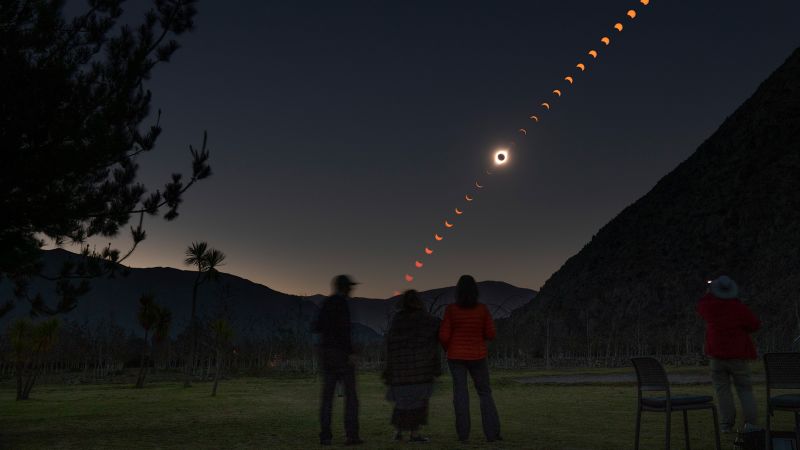
How to photograph an eclipse (according to a master of the genre)
CNN
An eclipse is an incredible opportunity for photographers of any skill level. Astrophotographer Stan Honda has some tips on how to capture the best images.
Getting to see even one total solar eclipse is a rare occurrence. Photographer Stan Honda has three under his belt. His first experience took place in Svalbard, a Norwegian archipelago in the Arctic Ocean, in 2015 — what he saw was a singular spectacle and chance for anyone wielding a camera. “At that latitude the sun, even at noon, was only about 11 degrees above the horizon, which is pretty low,” Honda said. “So we didn’t really have to look up into the sky — we just sort of looked straight at the horizon to see the eclipse taking place. When it went total, it was against this incredible foreground of ice and snow, and it was 2 degrees Fahrenheit there. We were all pretty bundled up, but it was a pretty remarkable scene. That has stayed with me.” The upcoming April 8 total eclipse will likely be the one of the most photographed events of the year, with almost 32 million people in the United States alone living in the path of totality — the corridor along which the moon will completely cover the sun — and another 150 million living within 200 miles of it. Crossing from Mexico into Texas and then across a dozen US states before reaching Maine and ending over Canada, the path will range between 108 and 122 miles (174 and 196 kilometers) wide, offering up to 4½ minutes of totality in the Southern states. Weather permitting, it is an incredible opportunity for photographers of any skill level. Whether you’re working with a high-end DSLR camera or a smartphone, Honda — an experienced astrophotographer who in addition to total eclipses has captured a whole lot of partial ones — has some tips on how to make the moment last through images. For the upcoming eclipse, Honda will be in Fredericksburg, Texas, taking pictures on behalf of international news agency Agence France-Presse.

Immigration and Customs Enforcement officials will be given access to the personal data of the nation’s 79 million Medicaid enrollees, including home addresses and ethnicities, to track down immigrants who may not be living legally in the United States, according to an agreement obtained by The Associated Press.





















 Run 3 Space | Play Space Running Game
Run 3 Space | Play Space Running Game Traffic Jam 3D | Online Racing Game
Traffic Jam 3D | Online Racing Game Duck Hunt | Play Old Classic Game
Duck Hunt | Play Old Classic Game










